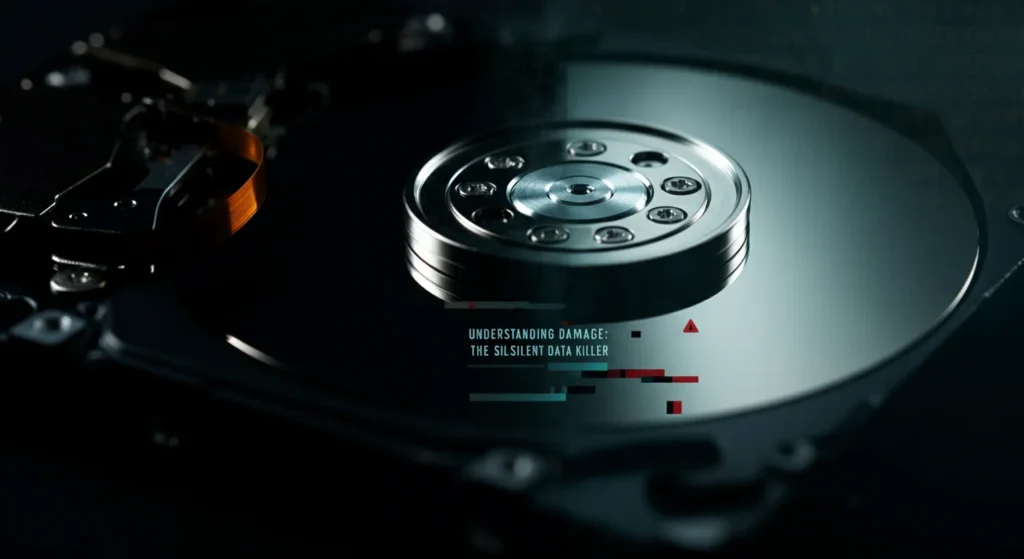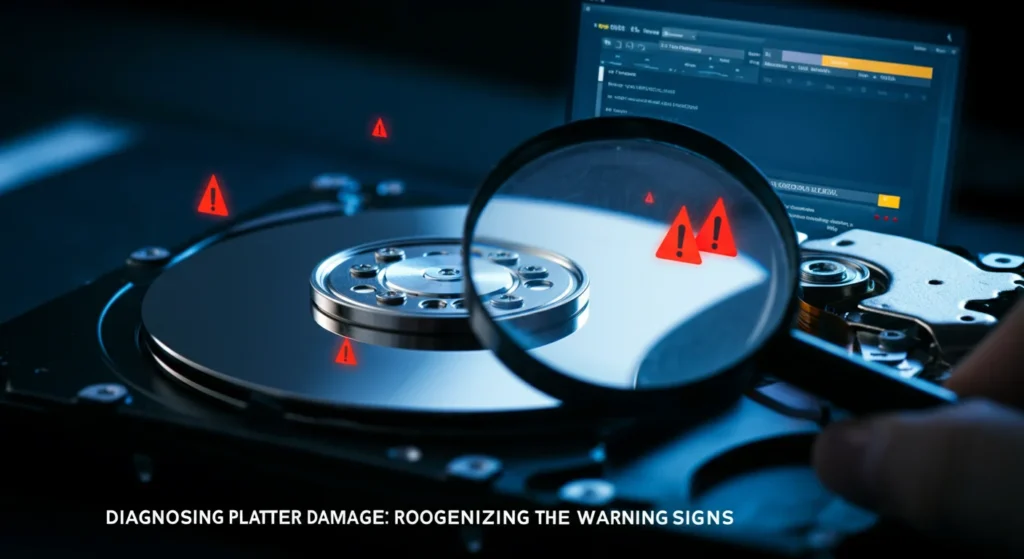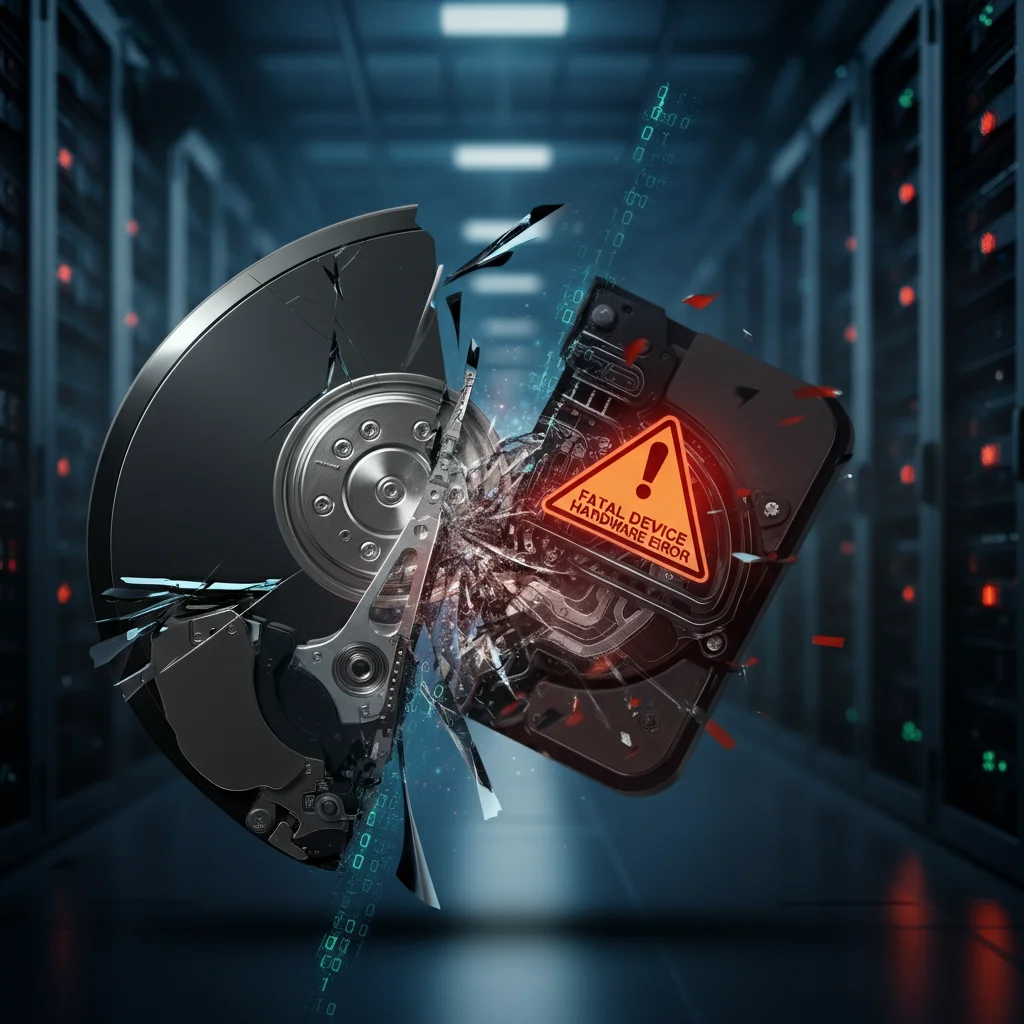Hard drives remain the backbone of data storage for countless businesses and organizations worldwide. At the heart of every traditional hard drive lies a series of magnetic platters—thin, circular disks that store your critical data. When these delicate components suffer damage, the consequences can be catastrophic, leading to complete data loss and system failure.
Understanding platter damage is essential for IT professionals, data center managers, and anyone responsible for maintaining digital infrastructure. This comprehensive guide explores what platter damage entails, how it occurs, and most importantly, what you can do to prevent and address it when disaster strikes.
The stakes couldn’t be higher. A single damaged platter can render years of business data completely inaccessible, potentially costing organizations thousands in downtime and recovery efforts. Yet many professionals remain unaware of the warning signs until it’s too late.
Understanding Platter Damage: The Silent Data Killer

Platter damage refers to any physical or chemical deterioration of the magnetic storage surfaces within a hard drive. These ultra-thin aluminum or glass disks, coated with magnetic material, are incredibly fragile despite their critical importance to data integrity.
Several types of damage can affect hard drive platters:
Physical scratches represent the most visible form of platter damage. These occur when the read/write heads make contact with the platter surface, creating microscopic grooves that destroy data permanently. Even scratches invisible to the naked eye can render entire sectors unreadable.
Corrosion damage develops over time as environmental factors break down the magnetic coating. This chemical deterioration typically appears as discolored patches on the platter surface and can spread rapidly under certain conditions.
Thermal damage results from excessive heat exposure, causing the magnetic properties of the platter coating to degrade. This type of damage often accompanies other failure modes and can significantly complicate recovery efforts.
Common Causes of Platter Damage
Head crashes represent the leading cause of platter damage in modern systems. When read/write heads malfunction or lose proper alignment, they can contact the spinning platter at speeds exceeding 7,200 RPM. This contact immediately creates permanent scratches and often triggers cascading failures.
Physical shock from drops, impacts, or vibrations can cause immediate platter damage. The precision engineering of hard drives means even minor disturbances can knock components out of alignment, leading to head-to-platter contact.
Environmental factors play a crucial role in platter deterioration. Excessive humidity promotes corrosion, while temperature fluctuations can cause thermal expansion that affects head positioning. Contaminants like dust or smoke particles can also settle on platter surfaces, creating additional friction points.
Power-related issues including sudden shutdowns, voltage spikes, and inconsistent power delivery can cause heads to land improperly on platters, resulting in immediate surface damage.
Consequences of Platter Damage: When Storage Systems Fail
The impact of platter damage extends far beyond simple data inaccessibility. These failures create a domino effect that can cripple entire systems and operations.
Immediate data loss occurs in damaged sectors, making files stored in those areas completely unreadable. Unlike logical errors that might affect file allocation tables, physical platter damage destroys the actual magnetic data representation, making standard recovery tools ineffective.
System instability manifests as frequent crashes, blue screens, and application failures. When the operating system attempts to access damaged sectors, it may hang indefinitely or crash completely, affecting productivity across entire organizations.
Progressive failure patterns mean platter damage rarely remains contained. Initial scratches can trap debris, creating additional friction points that accelerate wear on other platter areas. This cascading effect often transforms minor damage into complete drive failure within days or weeks.
Performance degradation becomes noticeable as the drive’s error correction systems work overtime to compensate for damaged sectors. Read/write operations slow dramatically as the system repeatedly attempts to access corrupted data.
Consider the case of a data center in Phoenix that experienced catastrophic server failure during a cooling system malfunction. Rising temperatures caused thermal expansion in several drives simultaneously, leading to widespread head crashes and platter damage across multiple systems. The facility lost three days of critical business operations and faced recovery costs exceeding $150,000.
Diagnosing Platter Damage: Recognizing the Warning Signs

Early detection of platter damage can mean the difference between successful data recovery and permanent loss. Several symptoms indicate potential platter issues:
Audible indicators provide the clearest warning signs. Clicking sounds, often called the “click of death,” typically indicate head assemblies repeatedly attempting to read damaged platter areas. Grinding or scraping noises suggest direct head-to-platter contact is occurring.
Performance symptoms include dramatically slower file access times, frequent system freezes during disk operations, and applications timing out when accessing stored data. These issues often worsen progressively as damage spreads.
Error messages related to disk read failures, bad sectors, or hardware errors frequently accompany platter damage. Modern operating systems may display warnings about imminent drive failure based on SMART (Self-Monitoring, Analysis, and Reporting Technology) data.
Professional Diagnostic Techniques
Visual inspection requires opening drives in controlled cleanroom environments. Trained technicians can identify scratch patterns, corrosion damage, and debris contamination that indicate platter condition. This process demands specialized facilities since exposure to ambient air can cause additional contamination.
Diagnostic software tools can map damaged sectors and assess the extent of readable data remaining on affected drives. These programs provide crucial information for planning recovery strategies and estimating success probabilities.
Specialized equipment including microscopes and surface analysis tools allows professionals to evaluate damage severity and determine appropriate recovery approaches.
Data Recovery Options: Salvaging Critical Information

When platter damage occurs, immediate action determines recovery success rates. Several factors influence whether data can be successfully retrieved from damaged drives.
Professional data recovery services offer the highest success rates for platter damage scenarios. These facilities maintain cleanroom environments necessary for safely handling damaged drives and possess specialized tools designed specifically for platter repair and data extraction.
Recovery specialists can often employ platter burnishing techniques to smooth minor scratches and restore readability to damaged sectors. This process requires precision equipment and extensive experience to avoid causing additional damage.
Advanced imaging techniques allow professionals to create sector-by-sector copies of damaged drives, working around corrupted areas to extract maximum data. These methods often recover information even when standard copying tools fail completely.
A small business in Austin learned this lesson firsthand when a power surge caused a head crash in their primary server. Initial DIY recovery attempts using consumer software failed completely and potentially worsened the damage. Professional recovery services ultimately retrieved 85% of their critical financial data, though the process required specialized platter repair techniques and cost $3,200.
DIY Recovery Limitations
Consumer-grade recovery software proves largely ineffective against physical platter damage. These tools work well for logical errors but cannot address the physical destruction of magnetic data storage surfaces.
Attempting self-repair of damaged drives almost invariably causes additional harm. Opening drives outside cleanroom environments introduces contaminants that can turn minor scratches into major damage zones.
Cost considerations often make professional recovery worthwhile despite seemingly high prices. An IT firm in Chicago recently spent $4,800 recovering financial data from a physically damaged drive, but this cost proved minimal compared to recreating months of client records and facing potential legal liabilities.
Prevention and Best Practices: Protecting Your Data Investment
Preventing platter damage requires a comprehensive approach addressing environmental, operational, and maintenance factors.
Environmental controls form the foundation of drive protection. Maintaining stable temperatures between 68-72°F (20-22°C) and relative humidity levels of 45-55% minimizes thermal stress and corrosion risks. Proper ventilation systems ensure consistent airflow without creating vibration sources that could affect drive operation.
Shock protection involves both physical mounting systems and operational procedures. Server racks should include vibration dampening, and portable drives require protective cases during transport. Never move systems while drives are spinning, as even minor vibrations can cause head positioning errors.
Power quality management prevents electrical issues that contribute to head crashes. Uninterruptible power supplies (UPS) systems protect against voltage fluctuations and provide clean shutdown capabilities during outages. Surge suppressors offer additional protection against transient electrical events.
Regular monitoring using SMART diagnostic tools can identify developing issues before catastrophic failure occurs. These systems track head positioning errors, temperature variations, and sector reallocation events that often precede platter damage.
Backup strategies provide the ultimate protection against data loss from platter damage. The 3-2-1 backup rule—three copies of data, two different media types, one offsite location—ensures business continuity even when primary storage systems fail completely.
A tech enthusiast in Seattle discovered the importance of proper handling when an accidentally dropped external drive suffered severe platter damage. Professional recovery services retrieved most personal photos and files, but the $1,800 cost served as an expensive reminder about careful equipment handling.
Frequently Asked Questions
Can data be recovered from a hard drive with platter damage?
Data recovery is possible, but the success rate depends on the severity of the damage. Professional data recovery services use specialized tools and techniques to retrieve data from damaged platters.
How can I prevent platter damage?
Preventative measures include protecting your hard drives from physical shock, maintaining a stable operating environment (temperature, humidity), and ensuring a consistent power supply.
Is it safe to open a hard drive to inspect the platter myself?
No, it is not recommended. Hard drives are sealed in a clean environment to prevent contamination. Opening a hard drive outside of a professional cleanroom can cause further damage.
What are the signs of a failing hard drive that might lead to platter damage?
Warning signs include unusual noises (clicking, grinding), frequent crashes, slow performance, and error messages indicating read/write failures.
How much does data recovery from a damaged platter cost?
The cost can vary widely depending on the extent of the damage and the complexity of the recovery process. Professional data recovery services will typically provide a diagnostic assessment and a quote before proceeding.
What tools do professionals use to recover data from damaged platters?
Professionals use tools such as cleanroom environments, specialized microscopes, platter burnishing tools, and advanced data recovery software.
How do environmental factors affect hard drive platters?
Extreme temperatures and humidity can cause corrosion and other forms of damage to the platter surface, leading to data loss.
What should I do if I suspect my hard drive has platter damage?
Immediately power down the device to prevent further damage and contact a professional data recovery service for an assessment.
Protecting Your Digital Assets Against Platter Damage
Platter damage represents one of the most serious threats to data integrity in modern computing environments. Understanding its causes, recognizing warning signs, and implementing proper prevention strategies can save organizations thousands in recovery costs and operational disruptions.
The key lies in proactive management rather than reactive responses. Regular monitoring, environmental controls, and comprehensive backup strategies provide multiple layers of protection against catastrophic data loss. When prevention fails, immediate professional intervention offers the best chances for successful data recovery.
Remember that platter damage affects more than just individual files—it can compromise entire business operations, customer relationships, and regulatory compliance. The investment in proper prevention and recovery planning pays dividends when measured against the true cost of data loss.
For additional information about hardware failure symptoms and diagnostic procedures, explore our detailed guide on [The Request Failed Due to a Fatal Device Hardware Error], which covers broader aspects of storage system troubleshooting and maintenance.


